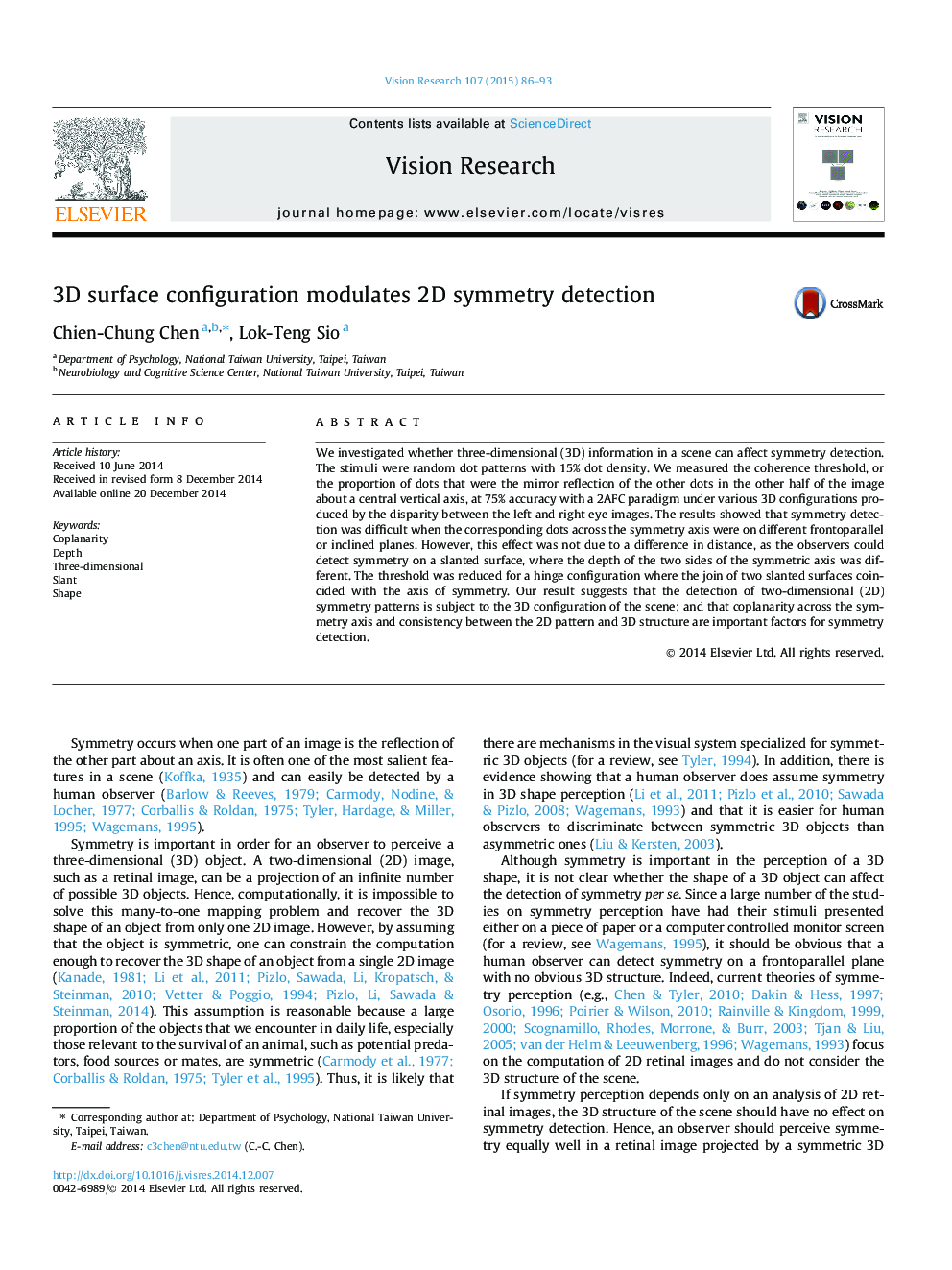| Article ID | Journal | Published Year | Pages | File Type |
|---|---|---|---|---|
| 6203374 | Vision Research | 2015 | 8 Pages |
â¢Symmetry detection was difficult when corresponding dots were not coplanar.â¢Thresholds were lowest where the join of two surfaces and symmetry axis coincided.â¢This result cannot be explained by a local depth computation.â¢It suggests a mechanism that analyzes global 3D structure in a scene.
We investigated whether three-dimensional (3D) information in a scene can affect symmetry detection. The stimuli were random dot patterns with 15% dot density. We measured the coherence threshold, or the proportion of dots that were the mirror reflection of the other dots in the other half of the image about a central vertical axis, at 75% accuracy with a 2AFC paradigm under various 3D configurations produced by the disparity between the left and right eye images. The results showed that symmetry detection was difficult when the corresponding dots across the symmetry axis were on different frontoparallel or inclined planes. However, this effect was not due to a difference in distance, as the observers could detect symmetry on a slanted surface, where the depth of the two sides of the symmetric axis was different. The threshold was reduced for a hinge configuration where the join of two slanted surfaces coincided with the axis of symmetry. Our result suggests that the detection of two-dimensional (2D) symmetry patterns is subject to the 3D configuration of the scene; and that coplanarity across the symmetry axis and consistency between the 2D pattern and 3D structure are important factors for symmetry detection.
